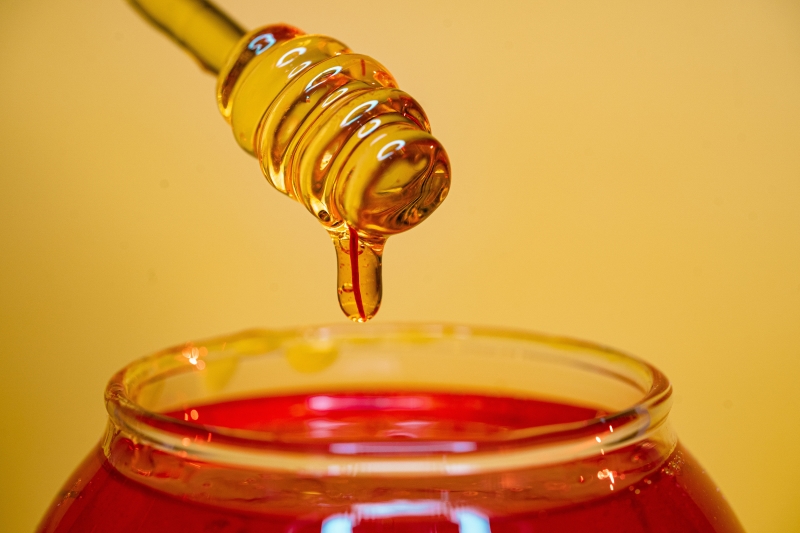Mānuka oil and mānuka honey originate from the same mānuka plant but exhibit a range of distinct differences. The two have been a staple in the traditional practices of indigenous New Zealand communities for countless centuries.
These substances stand out as exceptional natural remedies for addressing various skin conditions thanks to their skin-healing and skin-soothing properties.
Mānuka Plant: The Māori’s Super Healer

Manuka, scientifically known as Leptospermum Scoparium, is a native plant to New Zealand. Its resilient characteristics allow the plant to thrive in diverse environments throughout the country, ranging from alpine regions to coastal areas and from wooded groves to rugged cliff faces.
The mānuka plant is an ancient traditional medicine spread across the lands of New Zealand. It is indigenous to New Zealand’s first settlers, the Māori people, who were initially drawn to the region in pursuit of the moa—a flightless native bird that served as a readily available source of protein.
As the Māori interacted with the mānuka plant, these early inhabitants recognised its multi-benefit utility.
Beyond its practical use as a resource for crafting items such as canoe paddles, palisades, and shelters, the Māori discovered the plant’s medicinal value:
- They brewed tea from the leaves, to treat conditions including diarrhea, dysentery, and urinary tract infections.
- Inhaling the vapours from this tea was believed to alleviate symptoms of colds.
- The bark of the mānuka plant was soaked in water and the tincture used to reduce fever and functioned as a gargle or mouthwash.
- For colicky infants, crushed and soaked mānuka seed pods were administered, while a poultice made from pounded seed pods was applied to wounds and sores.
- The mānuka plant provided a sweet treat in the form of a sugary resin found on young branches during the summer months. This resin served multiple purposes: a salve for burns, a lozenge for coughs, and even a remedy for infant constipation.
Mānuka Oil vs Mānuka Honey
The table below offers a more detailed comparison between mānuka oil and mānuka honey.
| FAQ | Mānuka Oil | Mānuka Honey |
| Extraction Process | Mānuka oil is extracted through the steam distillation of the leaves and branches of the mānuka plant. | Mānuka honey is produced by bees feeding on the nectar of mānuka flowers. |
| Where they are sourced | Mānuka oil is sourced in regions of New Zealand where plants produce high triketones. | Mānuka honey is widely spread in undeveloped land and forest areas throughout New Zealand and Southeastern Australia. |
| Chemical Composition | Mānuka oil is comprised of three prominent chemotypes: monoterpenes, triketones, and sesquiterpenes. Triketones are responsible for the oil’s antimicrobial activity. | Mānuka honey contains carbohydrates, proteins, minerals, fatty acids, phenolic and flavonoid compounds. It also has a high level of methylglyoxal, which is responsible for its antibacterial activity. |
| Uses | Skincare, facial care, oral care, lip care, hair care, foot care and aromatherapy | Wound healing, burns, cough, sore throat and ulcer relief |
| Properties | Has antibacterial, antimicrobial, antifungal, anti-inflammatory and antiviral properties | Has antibacterial and antimicrobial properties |
The Extraction Process of Mānuka Oil vs Mānuka Honey
Mānuka oil is harvested through a process that involves passing steam through the harvested leaves and branches of the mānuka tree, known as steam distillation. This process extracts molecules containing the oil and turns them into vapour. Once the vapour cools and becomes liquid, the mānuka oil floats to the top. The oil is filtered and analysed for quality grading. Overall, the distillation process takes about 6 hours.
On the other hand, mānuka honey is produced by bees foraging on the mānuka flower nectar. Bees have a remarkable and specific process for creating mānuka honey, diligently foraging for the nectar of the mānuka flower—a crucial ingredient in honey production. Alongside nectar, they also gather pollen, storing it separately as a valuable food source.
Forager bees are the first to collect the nectar and pass it along to younger hive mates upon returning to the hive. This initiates a fascinating process where the nectar is gradually moved into honeycomb cells. During this transfer, the bees introduce enzymes which are vital in the honey-making journey.
The nectar, initially 70% water, must be reduced to 20% or less through evaporation to become honey. Predominantly composed of sucrose, the nectar is enzymatically transformed into glucose and fructose. Bees achieve moisture reduction by rapidly beating their wings over the honey cells, aided by the hive’s warm temperature (around 95 degrees). To safeguard against moisture, bees produce wax caps to seal the cells, preventing mould and fermentation.
Where Does Mānuka Oil and Mānuka Honey Come From?

Mānuka oil is sourced in certain regions in New Zealand that produce high triketone mānuka oil, whereas mānuka honey is widely spread in undeveloped land and forest areas throughout New Zealand and Southeastern Australia.
Mānuka Oil vs Mānuka Honey: Chemical Compositions
Mānuka oil is comprised of three dominant chemotypes: monoterpenes, triketones, and sesquiterpenes where triketones are responsible for the oil’s antimicrobial activity. In addition, these chemotypes pave the way for mānuka oil’s antibacterial, antimicrobial, antifungal, antiviral, antihistaminic, antiallergenic, antispasmodic, analgesic and anti-inflammatory properties. Mānuka oil can be used for skin care, facial care, oral care, lip care, hair care, foot care, wound healing, aromatherapy, and as a deodorant.
Contrarily, mānuka honey contains carbohydrates, proteins, minerals, fatty acids, phenolic and flavonoid compounds. It also has a high level of methylglyoxal, which is responsible for its antibacterial and antimicrobial properties. Mānuka honey can be used for skin care, wound healing, digestive health, and soothing a cough or sore throat.
Mānuka Oil vs Mānuka Honey’s Scent
The aroma of mānuka oil is characterised by an earthy, woody and balsamic scent that is simultaneously fresh, soothing and calming.
On the contrary, mānuka honey is also characterised by woody and earthy scents. Its flavour range spans from a gentle, earthy taste to a robust and slightly bitter profile in those with higher. This flavour diversity arises from the bees’ collection of nectar from a multitude of distinct sources.
What Are the Uses of Mānuka Oil?
When applied in its pure form, mānuka essential oil becomes a formidable opponent against bacteria that cause damage both to the skin and overall health. This potent oil serves as a protection for the skin, the body’s largest organ. It is effective in combatting severe cases of acne, facilitating the repair of damaged and dry skin, fostering skin cell regeneration with anti-ageing properties, and combating fungal infections such as athlete’s foot, toenail fungus, and more. Moreover, it is also emerging as a natural remedy against antimicrobial resistance, highlighting its significance in modern healthcare.
Scientifically formulated, East Cape mānuka essential oil can aid skin health without the need skin, rendering the need for harsh chemical treatments and synthetic products.
Furthermore, mānuka oil possesses synergistic properties, allowing it to complement and enhance the effectiveness of other ingredients and essential oils, each with its unique and potent benefits.
What Are the Uses of Mānuka Honey?
Mānuka honey has gained renown for its exceptional wound-healing properties and its effectiveness in treating burns and aiding in healing wounds. Besides its topical applications, it serves as a beneficial addition to tea when combating the onset of a cold, providing relief for sore throat or as a soothing remedy for ulcers, promoting quicker healing.
However, due to the dense and adhesive nature of mānuka honey, its versatility is somewhat constrained, particularly when considering its incorporation into a broad spectrum of skincare products.

